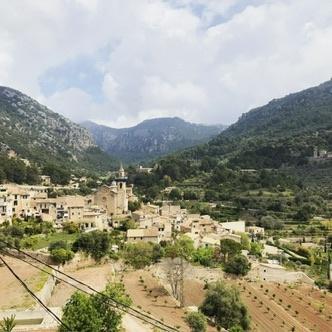What laws and regulations affect land use to protect ecological areas in Mallorca?
Similar Topics
mallorca land use
ecological protection mallorca
balearic islands laws
protected natural parks
serra de tramuntana
environmental impact assessments
natura 2000 network
coastal zone regulations
Mallorca, as one of the Balearic Islands, benefits from a series of laws and regulations designed to protect its unique ecological areas, ensuring the preservation of its diverse landscapes and native species. The Balearic Islands' government enforces stringent land use policies aimed at controlling urban expansion and maintaining the natural environment. These measures are particularly important given the island’s popularity as a tourist destination, which puts additional pressure on its natural resources. One of the cornerstones of land protection on Mallorca is the designation of protected natural parks and reserves where construction and development are either highly restricted or prohibited.
At the regional level, the Balearic Islands Planning and Environmental Law plays a critical role in managing land use, prioritizing conservation, and encouraging sustainable development. This legislation includes specific provisions that govern protected zones, such as the Serra de Tramuntana area, which is also a UNESCO World Heritage Site due to its outstanding natural and cultural significance. Any land developments within these zones must undergo rigorous environmental impact assessments to ensure minimal disruption to the ecological balance. Additionally, regulations also cover coastal zones to prevent degradation of marine habitats and safeguard biodiversity.
Moreover, national Spanish laws complement regional efforts by establishing frameworks for maintaining ecological integrity, including the designation of Sites of Community Importance (SCI) and Special Areas of Conservation (SAC) under the Natura 2000 network. These designations require member states to take appropriate conservation measures that maintain or restore natural habitats to a favorable status. Together, this legal framework helps balance development needs with ecological preservation, ensuring that Mallorca’s natural beauty and biodiversity are protected for future generations.
In practice, local municipalities also enforce zoning and land use restrictions in line with these broader regulations, carefully controlling building permits and infrastructure projects. This layered approach ensures that Mallorca’s ecological areas remain resilient despite ongoing human activity. Through these combined legal protections, Mallorca continues to manage its land resources responsibly, fostering an environment where nature and tourism coexist harmoniously.
At the regional level, the Balearic Islands Planning and Environmental Law plays a critical role in managing land use, prioritizing conservation, and encouraging sustainable development. This legislation includes specific provisions that govern protected zones, such as the Serra de Tramuntana area, which is also a UNESCO World Heritage Site due to its outstanding natural and cultural significance. Any land developments within these zones must undergo rigorous environmental impact assessments to ensure minimal disruption to the ecological balance. Additionally, regulations also cover coastal zones to prevent degradation of marine habitats and safeguard biodiversity.
Moreover, national Spanish laws complement regional efforts by establishing frameworks for maintaining ecological integrity, including the designation of Sites of Community Importance (SCI) and Special Areas of Conservation (SAC) under the Natura 2000 network. These designations require member states to take appropriate conservation measures that maintain or restore natural habitats to a favorable status. Together, this legal framework helps balance development needs with ecological preservation, ensuring that Mallorca’s natural beauty and biodiversity are protected for future generations.
In practice, local municipalities also enforce zoning and land use restrictions in line with these broader regulations, carefully controlling building permits and infrastructure projects. This layered approach ensures that Mallorca’s ecological areas remain resilient despite ongoing human activity. Through these combined legal protections, Mallorca continues to manage its land resources responsibly, fostering an environment where nature and tourism coexist harmoniously.
🧩 Related Questions
Related Question
Can the symbolism of the towers on the flag be seen in modern Mallorcan art or architecture?
Related Question
How do local markets in Mallorca showcase almonds and almond products for tourists?
Related Question
Are there specific museums or exhibitions in Mallorca that highlight the contributions of Llorenç Vidal i Vidal to the region’s education system?
